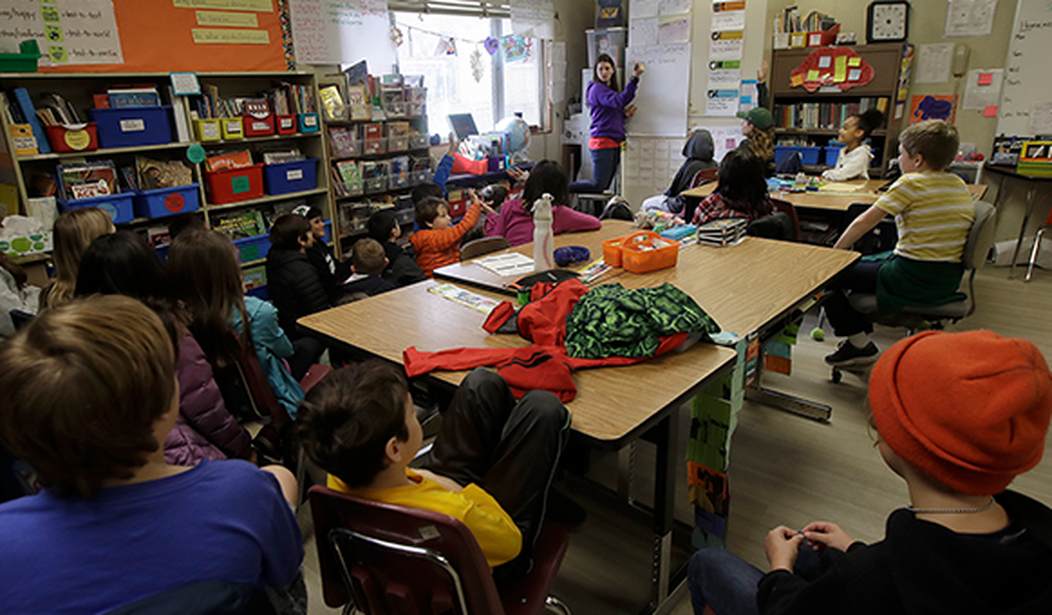The debate about curriculum based on critical theories is getting a lot of hype for how it impacts the teaching of history and civics. Critical theories can absolutely infect those two subjects, but this ideology is far more pernicious than that. There are curricula for math, science, and English that use the underlying thesis of critical theories that are every bit as damaging as teaching a warped version of history that claims America is built on the original sin of slavery.
Critical theories divide society into groups based on their immutable characteristics. Then, it assigns personality characteristics, motives, and societal roles to children based simply on how they were born. This strategy divides children by race, sex, immigration status, disability, and other characteristics they have no control over. It then assigns roles, such as oppressed and oppressor, based on those characteristics. Marxists learned long ago that dividing people by class was challenging. A content middle class was always a barrier to their progress. Dividing people based on immutable characteristics was more straightforward, and creating a coalition of the oppressed groups became the means to gain power, beginning in earnest in the 1980s.
Critical theories are pernicious because they remove agency and free will from one segregated group and blame the other for any disparity in outcomes between groups. It encourages blame and victimhood based on how children were born. The philosophy calls for outright discrimination against groups seen to be “privileged” historically. Generally, these children are white, male, and sometimes Asian. It follows in lockstep with the philosophy articulated by one of the high priests of critical theories, Ibram X. Kendi. “The only remedy to past discrimination is present discrimination. The only remedy to present discrimination is future discrimination.”
This underlying ideology and curricula based on critical theories violate both Title VI and Title IX of the federal code when implemented in public schools and universities and private educational institutions that receive federal funding. Title VI reads:
No person in the United States shall, on the ground of race, color, or national origin, be excluded from participation in, be denied the benefits of, or be subjected to discrimination under any program or activity receiving Federal financial assistance.
No person in the United States shall, on the basis of sex, be excluded from participation in, be denied the benefits of, or be subjected to discrimination under any education program or activity receiving Federal financial assistance.
Critical theories violate these principles in both directions. Characterizing white or male students as oppressors or inherently racist violate these laws. Likewise, telling minority and female students that they are oppressed or victims of white supremacy or the patriarchy discriminates against them. In no way does this ideology account for the differences within groups or wide variations in personal experience. It teaches children that they can discern another child’s nature or motives just by looking at them.
Lowering standards for these students, like the program Equitable Math does, is also discriminatory. It asserts that the emphasis on showing your work, getting the correct answer, and tracking progress in middle school math are white supremacist ideas that are unfair to black, Hispanic, and bilingual children. Math has correct answers. Showing your work is also a fundamental tool for teachers to evaluate whether a student understands the process. Intimating that children should not be expected to conform to these requirements based solely on their skin color is discriminatory on its face.
How exactly will this be deployed? Segregated classrooms? As educator Paul Rossi disclosed in a recent interview, Grace Church High School in Manhattan already has segregated lessons. In Michigan, a public school sent out notices for family meetings with segregated sessions for families to process the George Floyd verdict. Similarly, Philadelphia public schools created content for children as young as five that referred to America as a “Pyramid of Hate” that leads to genocide following the verdict. These examples are a small sample of what investigative journalist Chris Rufo has identified nationwide.
In addition to this type of curriculum being a violation of well-established civil rights law, it is amoral. It is difficult to imagine anything more abusive than telling a child that society is stacked against you and there is nothing you can do to change it. As G.K. Chesterton said, “There is a thought that stops thought. That is the only thought that should be stopped.” Depriving any child of personal agency or the chance to be the author of their achievement is one of those thoughts. This outcome is the goal of critical theories and, therefore, must be stopped.
As the parent of a child with a disability, I would be livid if they had ever been told that society has put insurmountable obstacles ahead of them, and they were powerless to change their situation. Disaster would have followed, with a scripted defeat. Instead, my child was constantly challenged and became a high-functioning, contributing member of society.
Conservatives sometimes conflate critical theories with a free speech issue and assert that we shouldn’t use government force to ban things. Any American who believes in the principles of liberal democracy should support the ability of parents to use their representatives at the state and local levels to remove toxic ideas from the classroom. Litigation would likely work, but it is expensive and time-consuming. This issue needs immediate redress. America does not have a caste system of any kind at this point. We should not allow the public school to create one based on immutable characteristics any more than we would allow the government to create one under any other circumstances.
Critical theories should not be confused with the history and civics curriculum used in our schools. There is a rich debate to be had about what to include. The balance between acknowledging the flaws and horrors of our past while recognizing our progress and achievements is one we should seek to achieve together, rather than dividing us by the color of our skin.










Join the conversation as a VIP Member